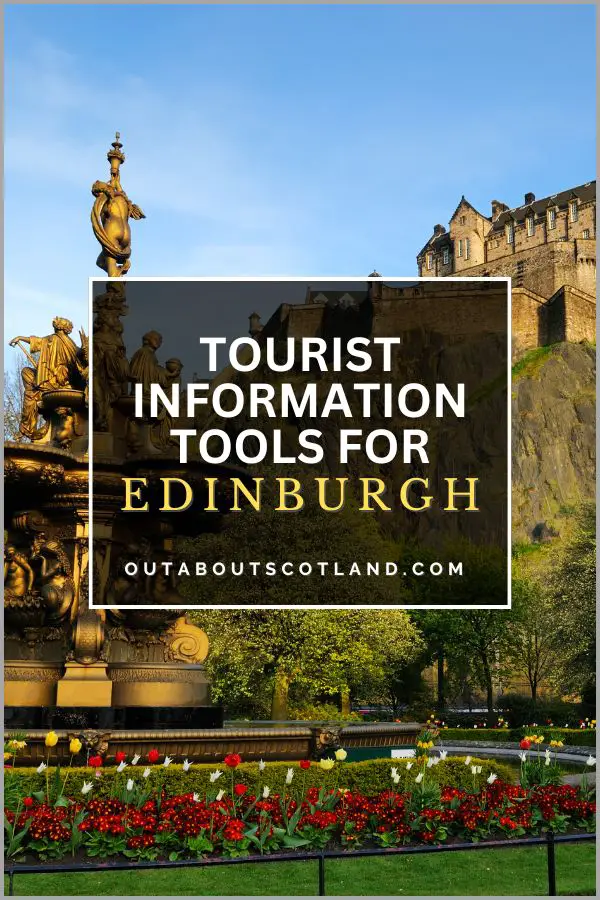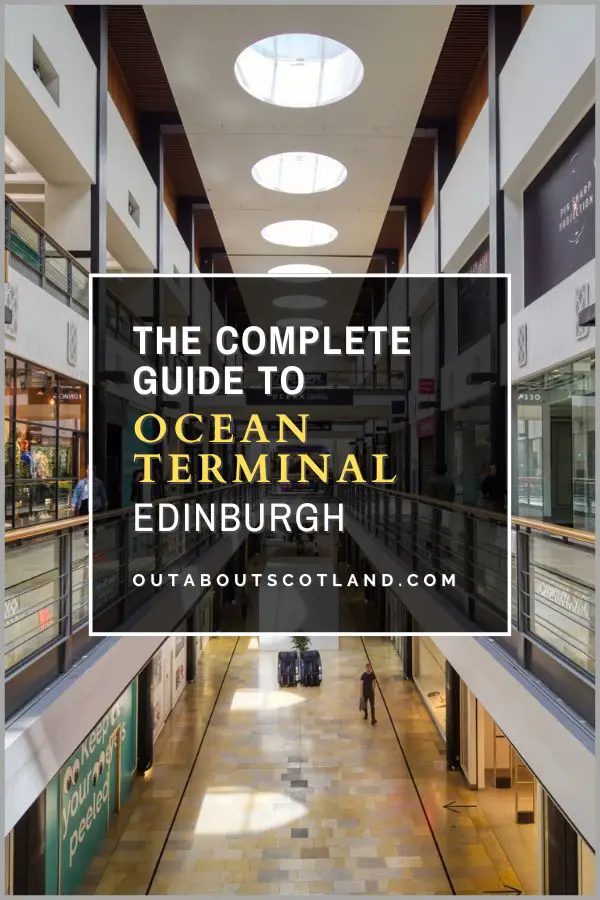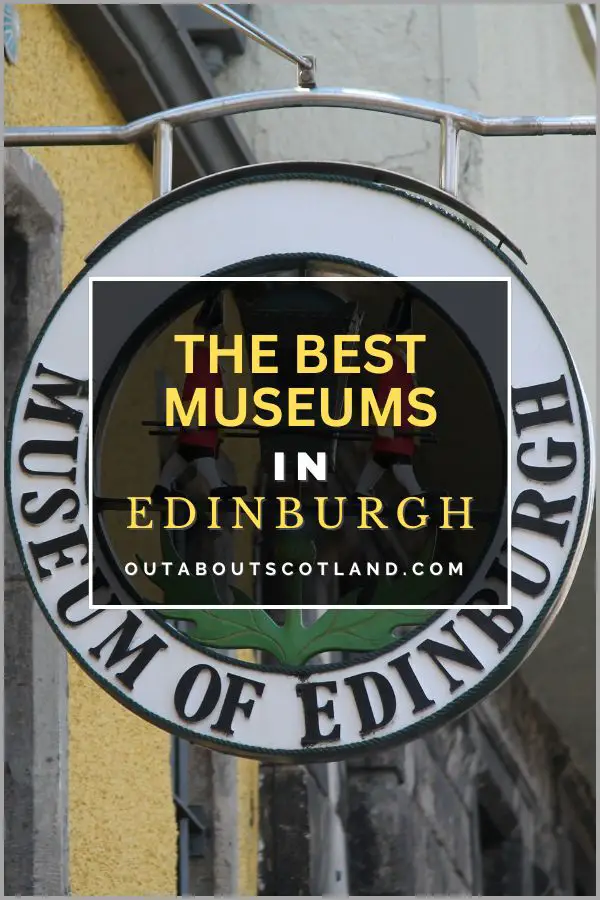If you’re visiting Edinburgh for the first time, this article will help you find your feet with essential travel tips and advice from a local, including how to get to the city, how to travel around it, what to expect from the weather, and the top attractions to visit.
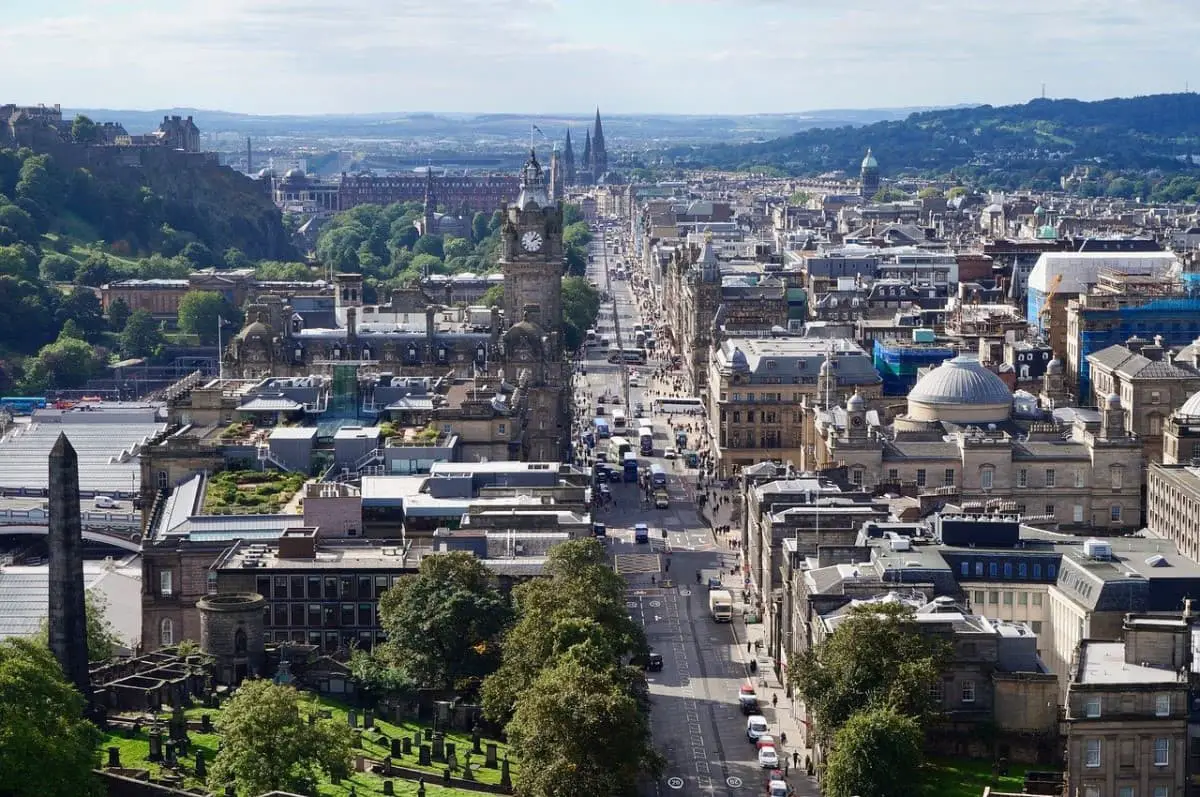
Getting to Edinburgh
There are a couple of options for getting to the city, depending on where you’re travelling from. If you’re visiting from overseas, then you’ll most likely be flying to Edinburgh Airport which lies 5 miles to the west of the city centre and has regular public transport links across the city and the surrounding areas.
Getting to and from the airport is easy thanks to a superb network of bus, tram, and taxi services, with the average journey taking around 30 minutes depending on the time of day. I would say the bus is the best option for travelling to and from the airport as the prices are reasonable (around £6 per adult) and the buses are modern and clean.
The airport bus service is operated by Lothian Buses (Airlink 100 service) and runs every 12 minutes during the day and 30 minutes at night, 24 hours a day, between the airport and St. Andrew’s Square in the city centre. Tickets can be bought at the airport information desk, at the bus stop, from the driver, or online. Full airport bus details are available to view on the Edinburgh Airport website bus and coaches page.
Alternatively, you can fly into Glasgow Airport and take a train to Waverley Station, which might be preferable as flights to Glasgow are usually cheaper than those to Edinburgh. There’s a regular bus service (First Glasgow Airport Express 500) between Glasgow Airport and Queen Street station which takes 15 minutes, with trains running every 30 minutes for a 75-minute journey to Edinburgh.
If you’re already in the UK, then your options for travelling to Edinburgh are limited to train, bus, plane, and car. Personally, I would advise against driving to Edinburgh if you’re coming for a weekend break as parking is limited and car parks are quite expensive – an example being the NCP Castle Terrace car park which will set you back around £80 for a weekend stay.
Likewise, I wouldn’t fly as the cost is often much more than driving, and the time taken to get through security plus travel time to the airport outweighs any advantage in the actual flight time.
Another option is taking a coach, and there are two main operators in the UK that travel to Edinburgh from most major cities. The first is Megabus, and the second is National Express. There are a few smaller operators, but the services aren’t as frequent, and Megabus and National Express tend to offer cheaper fares.

As an example, a coach journey from London to Edinburgh will take approximately 9 hours but it will only cost around £30 on Megabus, which is a significant saving on the £50 to £60 it will cost in petrol if you drive your own car.
Another option is to take the train, which is often the fastest method but will almost certainly be the most expensive. That being said, taking the train to Edinburgh is a doddle if you’re coming from London as the high-speed rail link will get you from Kings Cross to Waverley Station in just four and a half hours.
There are several train operators that run services between the main cities, so your best bet is to check The Trainline website and book your tickets in advance as they’re much cheaper than buying them at the station. You will also be able to compare prices at different times, as ticket prices can vary by up to 50% depending on the time of day.
I’ve included a table of distances and fuel costs for car and train travel to Edinburgh in the table below.
One-way times and costs from major UK cities to Edinburgh.
| Departure | Distance (miles) | Driving Time (hours) | Fuel Cost at 45 mpg | Train Time (hours) | Train cost |
| Birmingham | 294 | 5 | £39 | 4 | £80 |
| Cardiff | 392 | 6 1/2 | £52 | 7 | £197 |
| Leeds | 360 | 4 | £47 | 3 | £113 |
| Liverpool | 356 | 4 | £46 | 4 | £49 |
| London | 414 | 7 | £55 | 4 1/2 | £74 |
| Newcastle | 190 | 2 1/4 | £25 | 1 1/2 | £28 |
| Manchester | 351 | 3 3/4 | £46 | 4 | £45 |
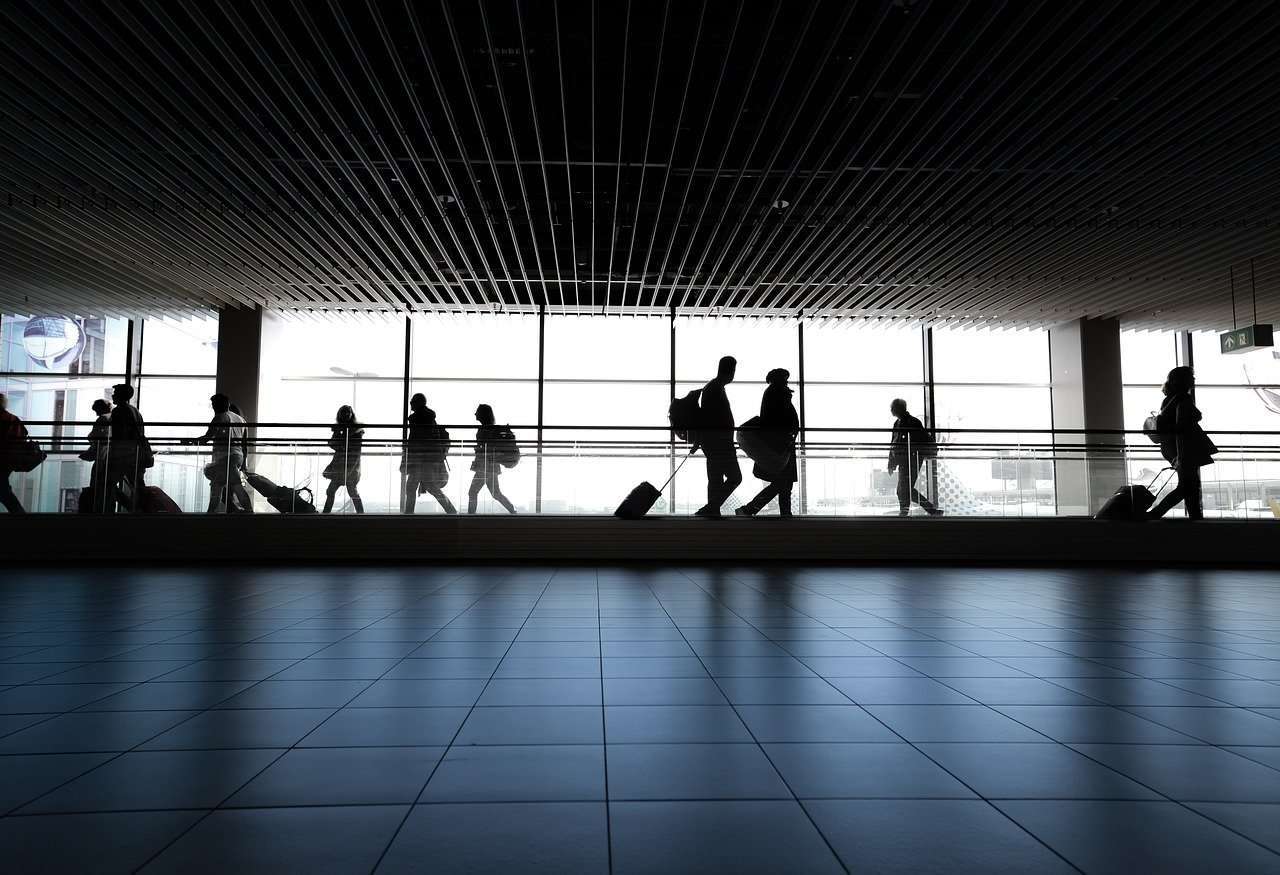
Protect Your Family From Scotland's Biting Midges
- Powerful, reliable protection for up to 8 hours
- Water- and sweat resistant
- Repels midges, mosquitoes, horse flies, sand flies, fleas and ticks
- Safe for use on adults, children over 30 months and pregnant women
- Non-sticky, moisturising with a pleasant fragrance
- Packaging may vary
Edinburgh Travel Tips
Edinburgh has a world-leading bus and tram network thanks to the services provided by Lothian Buses which offers cheap public transport in clean and well-maintained vehicles. The bus network extends right through Edinburgh and out to the surrounding areas, while the trams provide a fast mode of transport over 9 miles from the airport to the city centre.
Lothian buses provide over 50 routes through Edinburgh and day tickets are reasonably priced at around £5 for an adult all-day ticket. You can find timetables on the Lothian Bus website.
The tram system is a recent addition to Edinburgh and currently run every 15 minutes from 05.30 to 23:30 on a tram line that connects Edinburgh airport to the city centre, with the entire journey between the 16 stops taking 38 minutes.
Visit Transport For Edinburgh for more information on Edinburgh’s trams and buses, or download the Transport for Edinburgh App.
If you want to take a taxi, you’ll find ranks at the Edinburgh Airport exit and along Waverley Bridge, but there are many more official taxi ranks located throughout the city. Here’s a link where you can download the Edinburgh Council list of official taxi ranks.
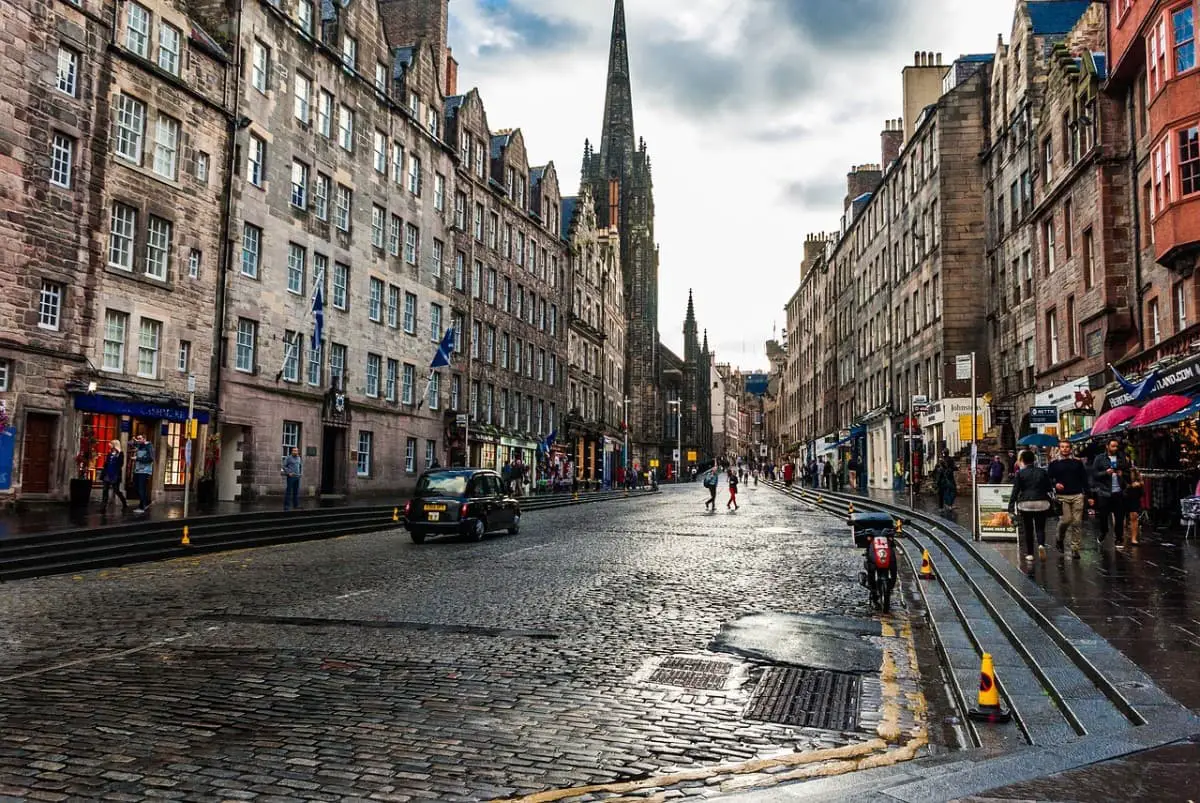
If taxis are looking a bit expensive, you could always book an Uber, although the service is currently somewhat limited and they are not as readily available as buses or taxis. Uber rides are also very expensive if you want to travel outside of Edinburgh.
My advice for walking is to make sure you have Google Maps installed on your phone and download the city centre map to your device. That way, if you ever lose your signal (which you shouldn’t, as Edinburgh has excellent phone coverage), you’ll still be able to navigate. Alternatively, get a waterproof paper OS Map, which will prove invaluable when your phone battery is low. Buy OS Explorer Maps direct from Ordnance Survey.
If you’re planning to explore a little further afield, then I recommend purchasing a Central Scotland Rover travel pass, which lets you make unlimited train journeys between Glasgow, Edinburgh, and the surrounding area for around £60. The pass lasts for three days and is valid for standard-class journeys on ScotRail trains, but unfortunately, you can’t use it on the new Borders railway line.
Tips for the Best Time to Visit Edinburgh
Although Scotland’s warmest and driest months are between May and September, the weather can be extraordinarily fickle, so I don’t think there’s a ‘best’ time to visit. The fact is, you’ll find things to do in Edinburgh at any time of the year, which I explain in my articles, The Best Things to do In Edinburgh on a Rainy Day and The 10 Best Places to Go in Scotland in January.
Although Britain as a whole is becoming more temperate with fewer extremes in temperature than in years gone by, you can still expect quite a difference between the amount of rainfall and the number of daylight hours between winter and summer.
The table below lists the weather averages for Edinburgh for each month of the year.
| Month | Temp High in °C | Temp Low in °C | Rainfall in mm | Daylight Hours |
|---|---|---|---|---|
| January | 6 | 1 | 62 | 7.5 |
| February | 7 | 1 | 46 | 9.5 |
| March | 9 | 2 | 48 | 12 |
| April | 11 | 4 | 39 | 14 |
| May | 14 | 6 | 46 | 16 |
| June | 17 | 9 | 59 | 17.5 |
| July | 19 | 11 | 65 | 17 |
| August | 18 | 11 | 61 | 15 |
| September | 16 | 9 | 57 | 13 |
| October | 13 | 6 | 68 | 10.5 |
| November | 9 | 3 | 60 | 8.5 |
| December | 7 | 1 | 63 | 7 |
Edinburgh’s winters are cold and dark, with mostly overcast skies between October and March. You can realistically expect half the days to have rain showers, along with a few inches of snowfall from January to February.
Summer in Scotland is from June to August with July and August generally having the highest temperatures and the least amount of rainfall – although bear in mind that ‘highest temperatures’ in Edinburgh hover around 20 °C unless there’s a heatwave like we had in 2018 which saw 30 °C.
Aside from the weather, other deciding factors that could make you choose a summer or winter break in Edinburgh are the festivals, and the city is proud to host two of Europe’s finest festivals in December and August.
If you’re intending to come here in winter, you might as well book your trip during December, when the Edinburgh Christmas Festival is in full swing. This annual festive experience runs throughout the month and into the early new year, and it features a huge amount of fun things to see and do.
There’s a superb Christmas market in Princes Street Gardens where you’ll find lots of Christmas gifts and delicious food and drink; a funfair that’s sprawled over several locations in the city; and lots of Christmas-themed events, including the ever-popular Kings Theatre panto and the famous Spiegeltent circus.
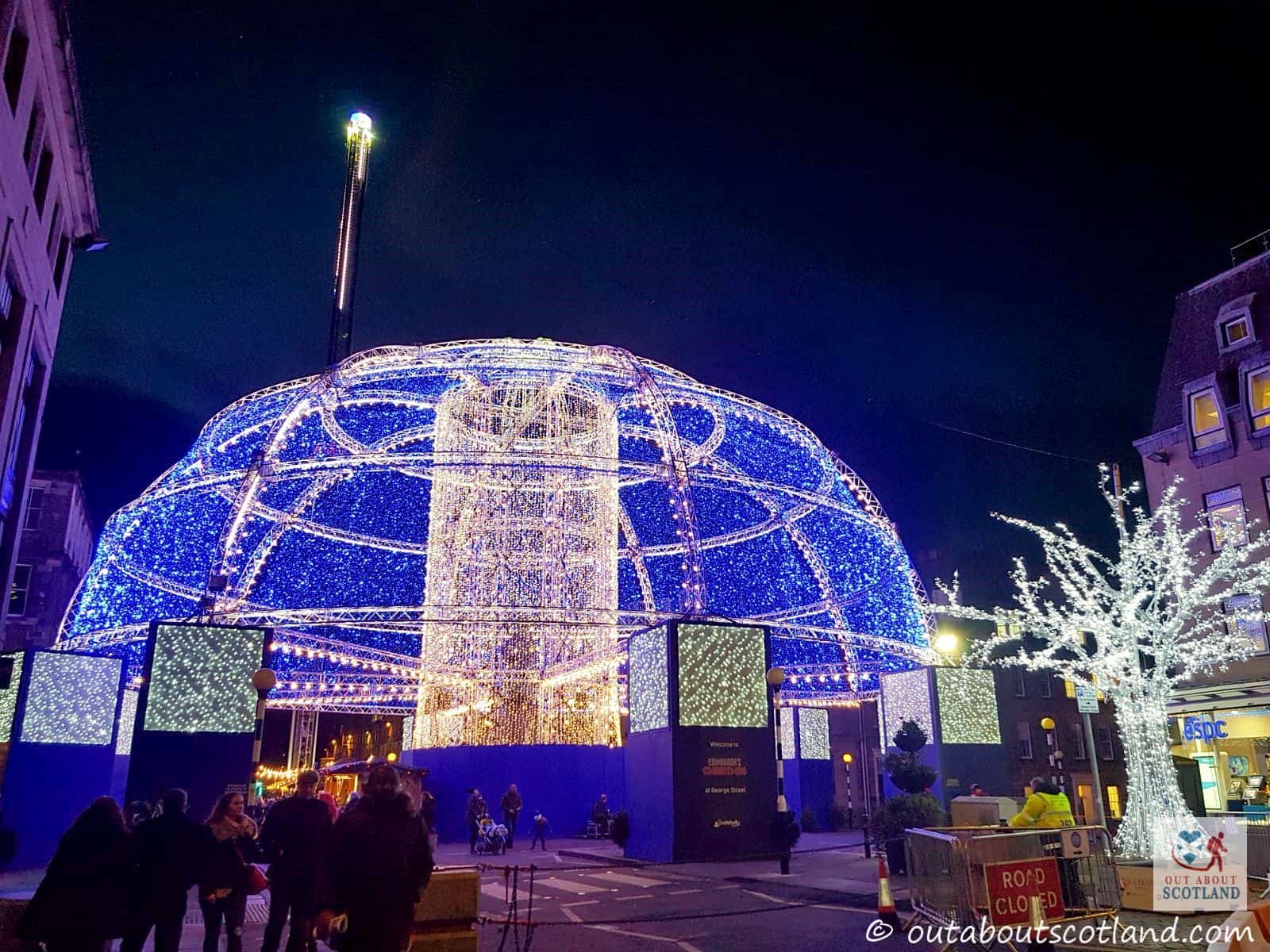
I recommend timing your visit for the week after Christmas, as you’ll be able to make the most of the Christmas markets and funfair as well as Edinburgh’s Hogmanay. Hogmanay is Scotland’s celebration of the new year, and it’s an even bigger celebration than Christmas.
The highlights are the street party on Princes Street (billed as the biggest street party in the world) and the torchlight procession through The Royal Mile to Holyrood Park.
So that’s Christmas wrapped up, but what about summer? Well, the height of Edinburgh’s tourist season is also the time you’ll find the city plays host to The Fringe Festival – the biggest multi-arts festival in the world. This incredibly popular event regularly draws in half a million visitors over three weeks in August, and it has to be the highlight of the entire Scottish events calendar.
Art in all its forms can be found at the festival including theatre, comedy, dance, circus, cabaret, music and opera performed by a variety of artists from complete amateurs to world-famous professionals.
There are in excess of 50,000 performances across 3,500 different venues during the three weeks that the festival is held, so it can be a bit overwhelming if you’re a first-time visitor, but you’ll be able to see who’s playing in which venue by browsing the official Edinburgh Fringe website.
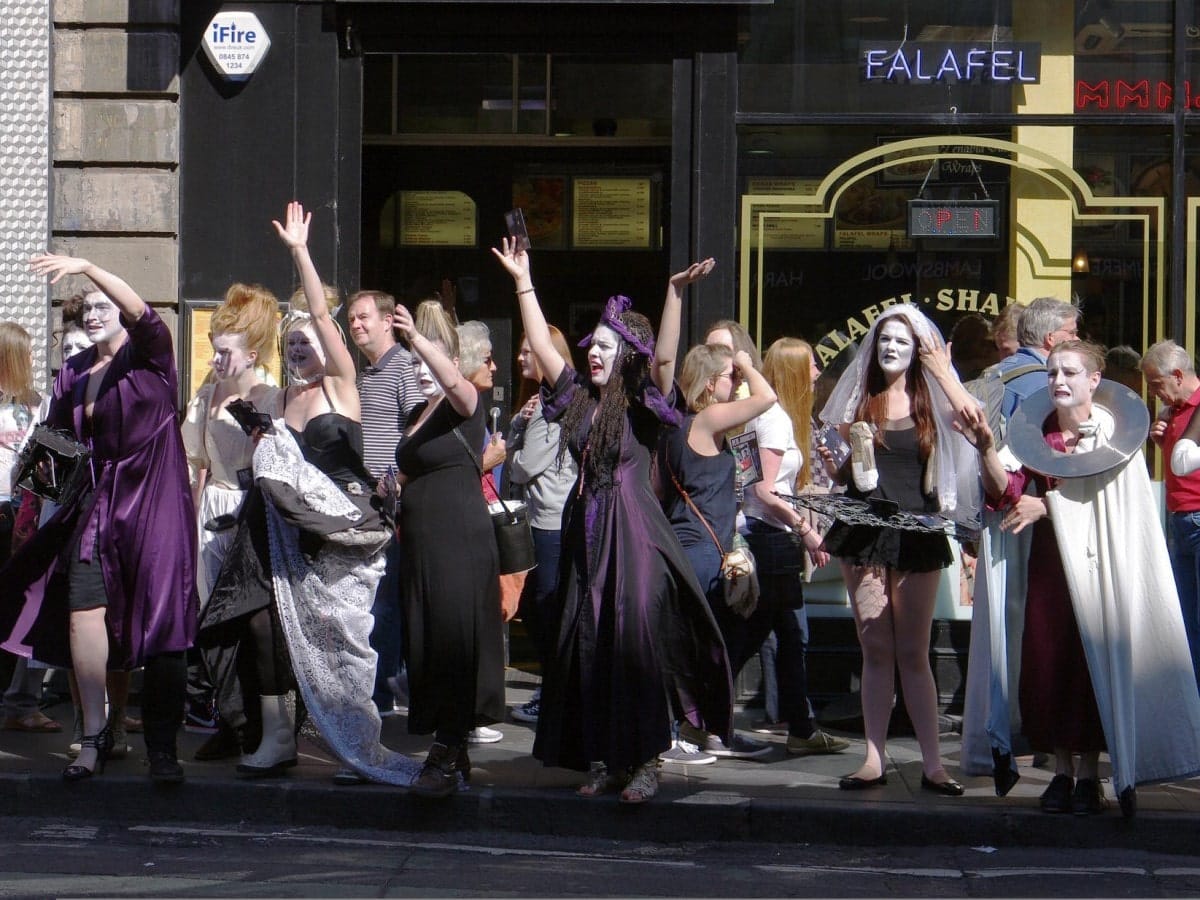
Stop Painful Blisters Spoiling Your Time In Scotland
- Deep cushioning to relieve pressure and prevent painful rubbing
- Hydrocolloid active gel technology creates an optimal healing environment for foot blisters
- Adhesive, tapered edges so Compeed flexes with movement and won't rub off
- Keeps natural moisture in and germs out, with translucent edges to help blend in with the skin
- It prevent, ease the pain, and make a recovery faster
Tips on What to Wear in Edinburgh
Unless you’re coming from a very hot country there’s no need to wrap yourself up in ten layers of thermals as despite what you might have heard Edinburgh’s actually not too bad on the weather front. Sure, we get a lot of grey, rainy days, but Scotland’s (and I guess Britain’s) weather is becoming increasingly temperate, and the days of sub-zero temperatures every winter seem to be long behind us.
In winter, you won’t go far wrong with jeans, a T-shirt, a jumper, and a thick jacket, but don’t forget to always pack a hat, gloves, and a scarf, as the cold wind can pick up and whip in from the Firth of Forth in an instant, which makes temperatures drop significantly. Prepare for an average temperature of 0–5 °C in winter, and you’ll be fine, though there are a couple of things to bear in mind.
First, the drains can get clogged up after a snowfall, so make sure you’re wearing semi-waterproof shoes. Second, Edinburgh is one of the greenest cities in Europe, so there’s a good chance you’ll end up romping through a park (most likely Holyrood Park) which can get very muddy, so I’d advise you to take walking boots with you, which will come into their own if you decide to climb Arthur’s Seat.
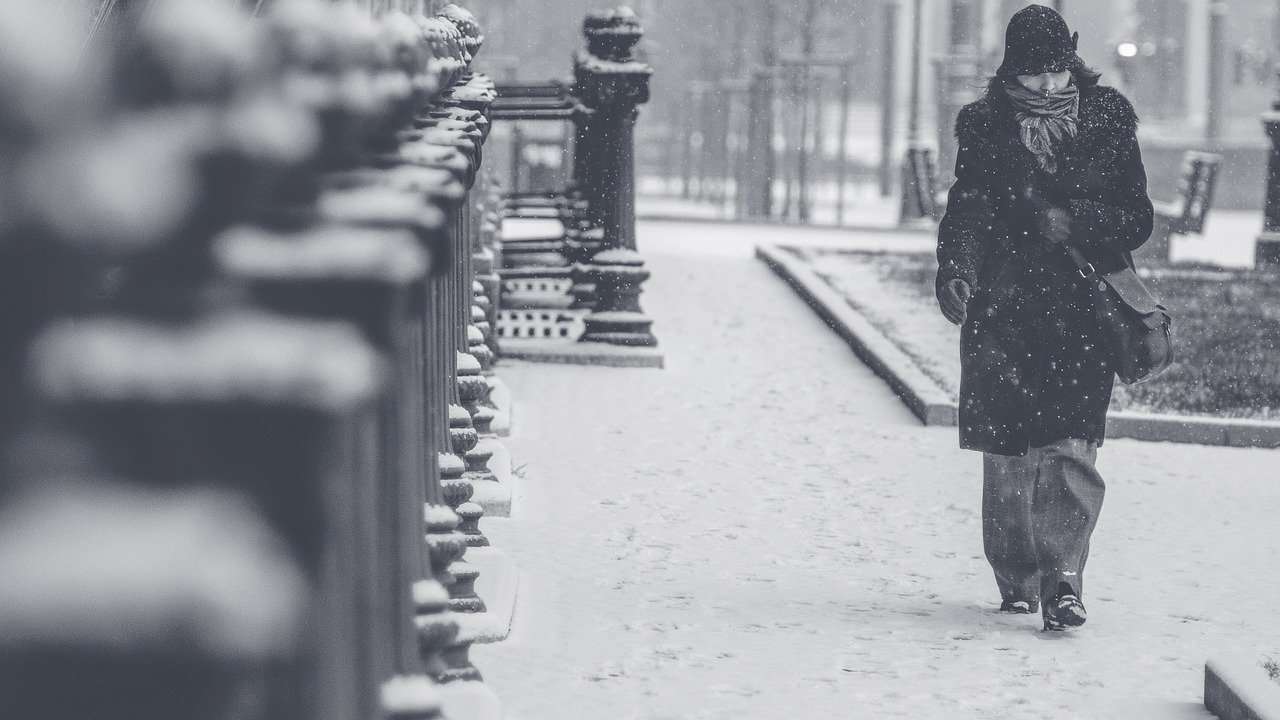
Third, you’re going to get caught in a lot of rain showers, which is just a fact of life in Scotland. If you don’t like wearing bulky jackets, consider chucking a pac-a-mac (this and the following are Amazon links to products I recommend) in your bag, as it’ll save you sitting in wet clothes for the remainder of the day.
In summer, Edinburgh really brightens up, and you’ll frequently find blue skies for days on end, although there will be just as many overcast days alongside them. With that in mind, you might consider taking a backpack (see my recommended backpacks) and throwing in a thin top or two along with the pac-a-mac I already mentioned.
With regards to fashion, we’re a pretty relaxed bunch in Edinburgh and you won’t see many eyebrows raised no matter what you wear (this is the home of the Fringe after all) but if you’re eating in public places be considerate and wear a shirt indoors. Likewise, it’s considered polite to cover your feet in restaurants and take your hat off. But other than that, wear what you like!
Tips on Where to Stay in Edinburgh
Accommodation costs will depend on a number of factors including the location, type of hotel and the time of year, but generally, you can expect hotels to raise their prices in the summer months by 50% to 150%. The cheapest time of year to visit Edinburgh is January, when hotel bookings are at their lowest after the hectic Christmas and New Year festivities, which leave most tourists with lighter wallets and heavier waistlines.
The most expensive time is August during the Fringe festival as virtually all hotels and B&Bs are fully booked. However, there are ways to save money on hotels which might be useful if you don’t mind a little extra effort.
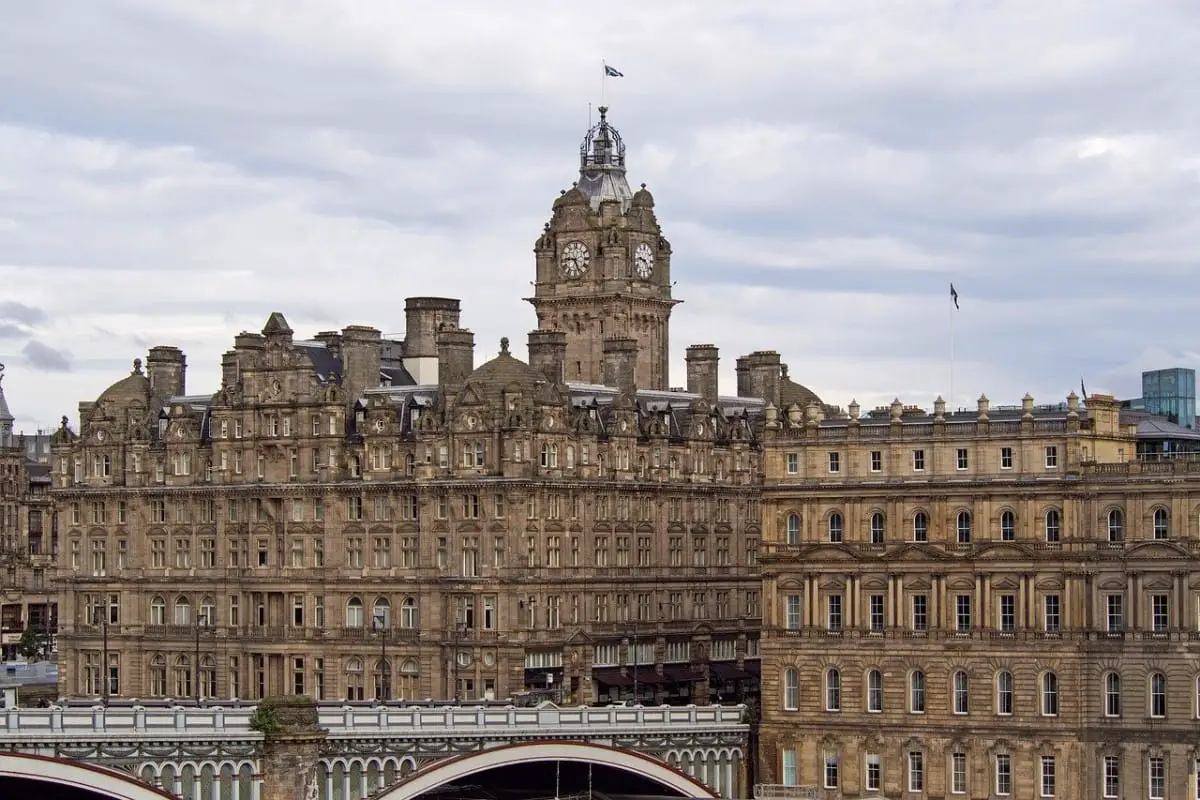
The first tip is obvious enough, which is to book out of season. That’s basically any time from September to May, although you will see an increase in room prices during school holidays. A second suggestion is to pre-book several months in advance.
Hotels and B&Bs will slowly ramp up their prices prior to any big events in Edinburgh, but booking 2 or 3 months before the event happens will keep costs low, especially if you use Booking.com which offers a couple of money-saving options for tourists.
First, their Genius programme gives you increasing levels of rewards after you book a certain number of times. Genius level 1 often saves 10% on the room cost, while level 2 saves up to 25% on the room cost, and some hotels offer additional free upgrades like a complimentary breakfast.
The second tip with using Booking.com is to make the reservation on your mobile phone rather than your desktop computer, as the Booking.com app sometimes gives an additional 10% off the total cost on top of the savings made with the Genius programme.
Take a look at the examples below for an idea of typical Edinburgh hotel prices in January and August.
| Edinburgh City Centre, 2 adults, Mid-August | Rating | Cost |
| The Scotsman Hotel | Luxury | £337 |
| Old Waverley Hotel | Mid Range | £221 |
| easyHotel Edinburgh | Budget | £109 |
| Edinburgh City Centre, 2 adults, Mid-January | Rating | Cost |
| The Scotsman Hotel | Luxury | £200 |
| Old Waverley Hotel | Mid Range | £184 |
| easyHotel Edinburgh | Budget | £34 |
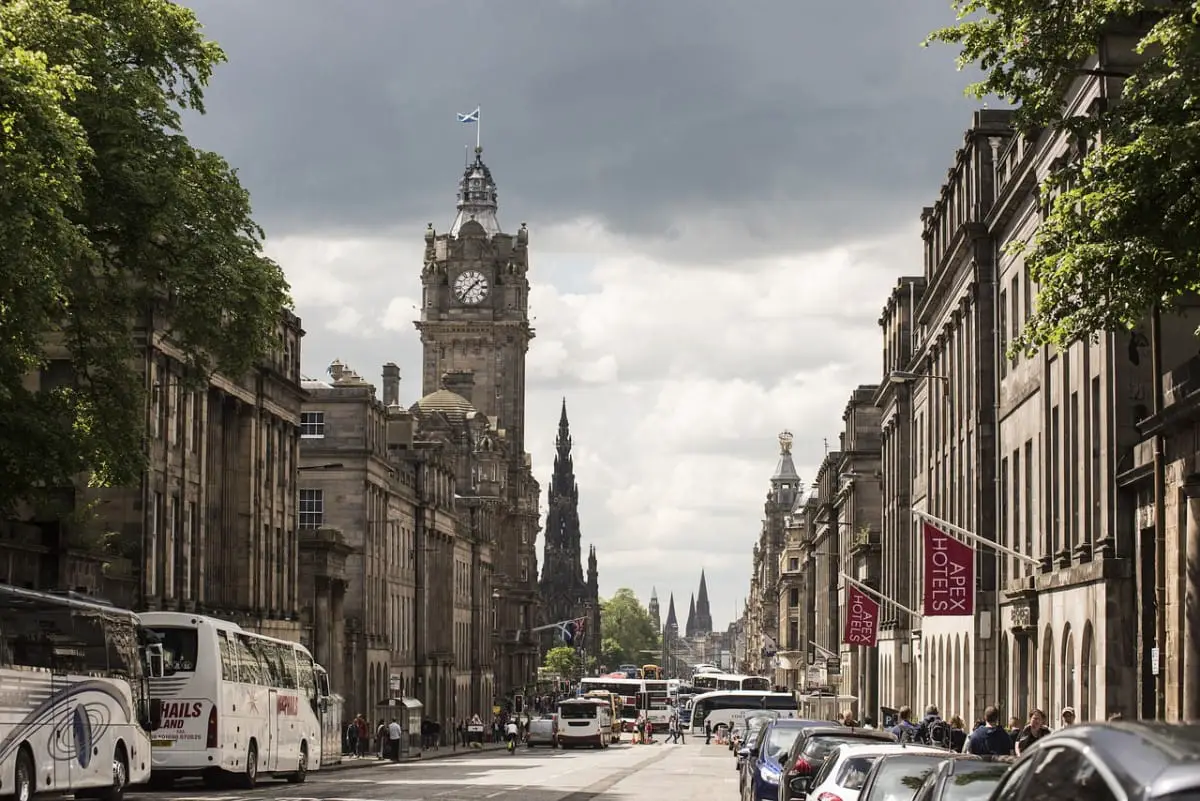
Protect Your Family From Scotland's Biting Midges
- Powerful, reliable protection for up to 8 hours
- Water- and sweat resistant
- Repels midges, mosquitoes, horse flies, sand flies, fleas and ticks
- Safe for use on adults, children over 30 months and pregnant women
- Non-sticky, moisturising with a pleasant fragrance
- Packaging may vary
Tips to Save Money in Edinburgh
Scotland’s tourist attractions are often quite pricey, especially the big venues like Edinburgh Castle and The Scotch Whisky Experience, which cost around £20 per adult, but you can save some money with the following tips.
If you buy your tickets online in advance it’s usually possible to save a few pounds compared to buying tickets on the gate so I recommend keeping your phone with you and checking the attraction’s website booking page before heading to the turnstiles.
If you intend to visit historic attractions in Edinburgh I definitely recommend the Historic Environment Scotland Explorer Pass which allows entry to over 70 of Scotland’s top historic attractions over 5 or 14 consecutive days with as many repeat visits as you like.
In Edinburgh, the pass is valid for Edinburgh Castle, Holyrood Palace, Craigmillar Castle and many sites in the surrounding area, and it’s worth purchasing for Edinburgh Castle alone as the pass allows repeat visits to the excellent café with its panoramic city views. In addition, you can skip the enormous queues by presenting your pass in the gift shop instead of waiting in line at the ticket office, potentially saving 30 minutes to an hour of queueing.
Another tip is to keep hold of your Lothian Bus ticket as there’s usually a 2-for-1 deal for Edinburgh’s top attractions printed on the back. The offers change frequently, so there’s a chance you’ll be offered different discounts during your time in Edinburgh.
If you want an all-in-one discount, head to the official Edinburgh City Pass website where you can buy an adult two-day pass for around £60, which allows entry into 15 of the city’s top attractions including Dynamic Earth, John Knox House, The Edinburgh Dungeon, The Georgian House, and many more.
If you’re intending to take a tour around Edinburgh, you won’t go wrong by getting a ticket for the City Sightseeing buses which feature an open-top upper deck and a recorded audio tour that will tell you about each place you drive past. The buses stop at nearly all the top attractions in the city, and tickets allow you to hop on and hop off over 24 hours, so you could even save money by using them instead of Lothian Buses.
The tour bus circles around a single route with 14 stops, and you’ll almost certainly see them on Waverley Bridge, opposite the train station. You can purchase tickets on the bus, or you can download a voucher onto your mobile phone.
And finally, if you really want to save money, you can’t get much better than free, and thankfully, Edinburgh is home to lots of free places to visit, and in fact, I’d go so far as to say the majority of the best attractions don’t cost a single penny to enter. I’ve compiled a few of my favourites in my Free Attractions in Edinburgh Guide.
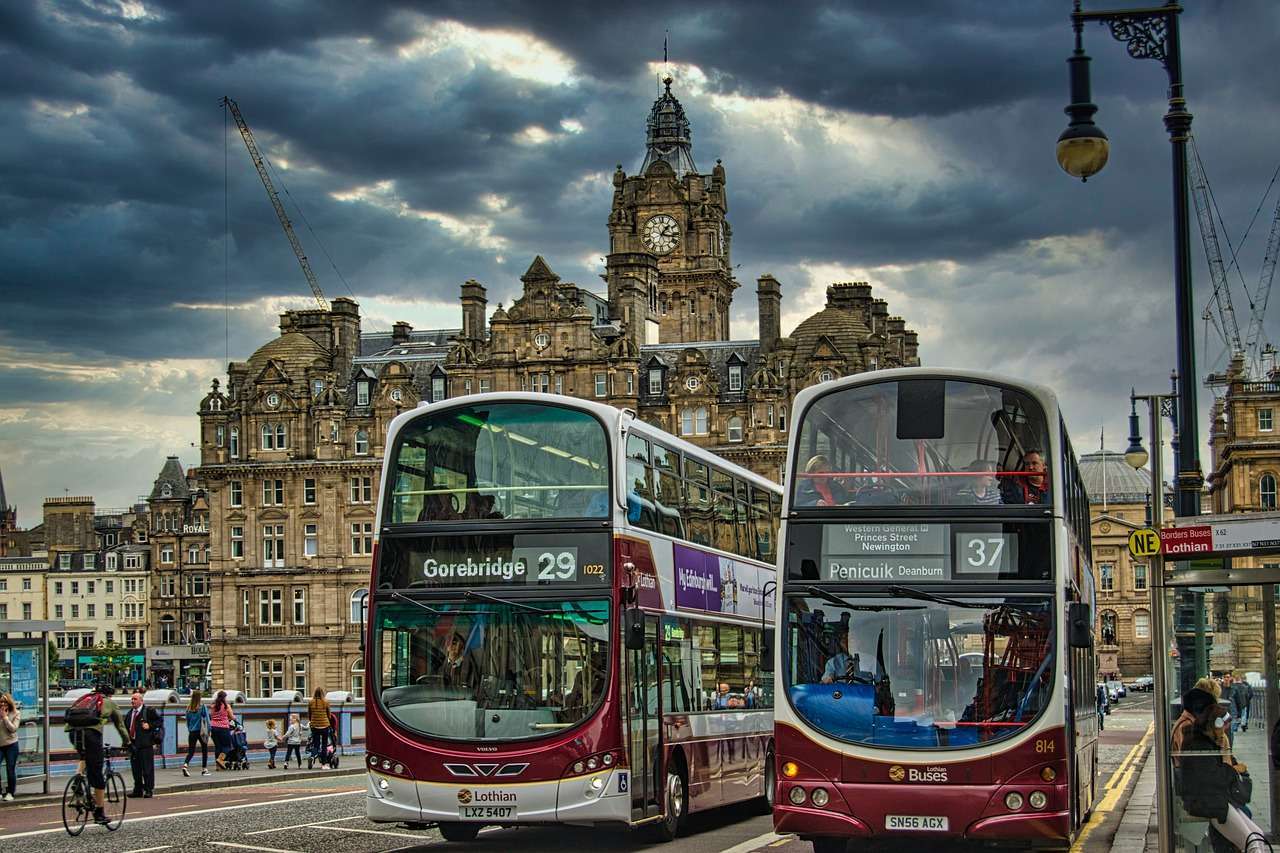
Bonus Edinburgh Travel Tips
1: Edinburgh’s weather is as changeable as the rest of Scotland so you’ll need to prepare for the elements no matter the time of year. Due to its proximity to the Firth of Forth, Edinburgh is frequently submerged below a thick layer of sea mist known as the haar.
The haar can roll in at a moment’s notice, and it’s most prevalent in autumn and winter, but you’ll also see it at the end of warm, muggy days in summer. My advice to combat the haar is to pack an extra insulated fleece in your backpack (see my recommended backpacks) and always keep gloves and a hat in there along with a pac-a-mac (Amazon links to products I recommend).
2: If you’re looking for free things to do in Edinburgh, you’re in luck, as most of the city’s national museums and public places have completely free admission. If the thought of spending £20 to get into Edinburgh Castle is giving you hot flushes, just add a few of these suggestions to your itinerary to reduce your overall costs:
The National Museum of Scotland, The National Portrait Gallery, The National Gallery of Modern Art, Greyfriars Kirk, The Royal Botanic Gardens, Calton Hill, Holyrood Park, The Museum of Childhood, The People’s Story Museum and The Museum on the Mound.
3: Edinburgh is one of the top foodie destinations in Britain, but as it’s such a tourist hotspot there are many restaurants that are more concerned with making money than making good food. Basically, I’d advise against eating anywhere on The Royal Mile as the food in the majority of the pubs is average at best, with prices that are inflated to cash in on tourists.
If you want reasonably priced food head to The Shore in Leith which features several superb restaurants or take a look at the traditional pubs in Rose Street.
4: Edinburgh has a fascinating thousand-year history, but learning about it in one visit is pretty much impossible without booking yourself onto a tour with a knowledgeable guide. You have several options, but I recommend Mary King’s Close midway on The Royal Mile, which takes visitors beneath the city streets to see how people lived at the time of the black plague.
Other good tours are the ones organised by Mercat Tours – especially the spooky ghost tours that will take you underground through the Edinburgh Vaults (one of the most haunted places in Britain). You can sign up for Mercat Tours either online or via the tour guides that stand near the Mercat Cross outside St. Giles Cathedral.

5: One thing I would definitely suggest you do if you’re staying in Edinburgh for a few days is to check out all the unusual attractions that are off the standard crowded tourist trails. There’s so much more to the city than the castle and the palace, so consider adding these attractions to your itinerary as well (note that some attractions are located outside the city): Gilmerton Cove, The Water of Leith, Leith, Rosslyn Chapel, The Pentland Hills, Cramond Island, and Craigmillar Castle.
6: A visit to Edinburgh wouldn’t be complete without taking home a souvenir or two, whether it’s clothing, whisky, or a novelty gift, but there are a few things you should bear in mind before you get your bank card out.
I would advise against purchasing any gifts from the souvenir shops on The Royal Mile as the prices are inflated and many items are on the verge of being fake – like the cashmere jumpers and scarves that only have a tiny percentage of cashmere wool in them.
Instead, I recommend heading to Edinburgh Castle or Holyrood Palace which have quality souvenirs that are genuinely from Scottish manufacturers. A Historic Environment Scotland membership gives you a 10% discount in their shops.
7: If you’ve not tried Scotch whisky before and you’re in Edinburgh for the first time you almost have to try a sample or two before heading home. My recommendations are the Whiski Rooms on North Bank Street and the Scotch Whisky Experience near the castle esplanade.
The Whiski Rooms has a superb collection of Scotch from across the country and the food is first class. The Whisky Experience is more geared towards first-time whisky drinkers and in addition to the fun tours they have a very good whisky bar and café.
If you want to take a bottle home with you, you’ll find the shops on The Royal Mile are quite expensive, but Cadenhead’s Whisky Shop in Canongate is one of the best in the city. Alternatively, take a tour around Glenkinchie which is Edinburgh’s only whisky distillery (it’s located 15 miles southeast from the city centre).
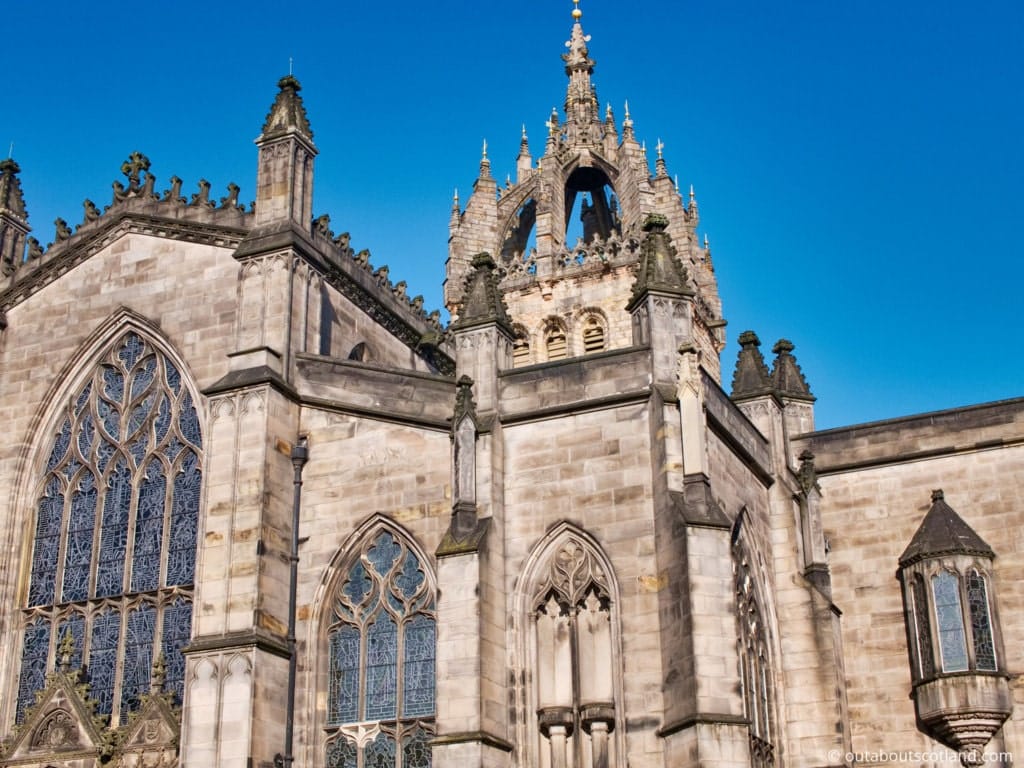
Stop Painful Blisters Spoiling Your Time In Scotland
- Deep cushioning to relieve pressure and prevent painful rubbing
- Hydrocolloid active gel technology creates an optimal healing environment for foot blisters
- Adhesive, tapered edges so Compeed flexes with movement and won't rub off
- Keeps natural moisture in and germs out, with translucent edges to help blend in with the skin
- It prevent, ease the pain, and make a recovery faster
Frequently Asked Questions
When is the best time of year to visit Edinburgh?
December for Edinburgh’s Christmas festival and Edinburgh’s Hogmanay festival.
August for the Edinburgh Fringe and the International Book Festival.
June to August for the best weather.
January to March for the cheapest hotel prices.
May and September for the least number of visitors with moderate temperatures.
What should I not miss in Edinburgh?
Edinburgh Castle, Holyrood Palace, Holyrood Park, The Scotch Whisky Experience, Camera Obscura and World of Illusions, ghost tours around The Royal Mile and in the Edinburgh Vaults, The National Museum of Scotland, The National Gallery of Modern Art, The National Portrait Gallery, The National Gallery of Scotland.
How many days in Edinburgh is enough?
If you’re visiting Edinburgh for the first time you should aim for 2 to 3 days to see the majority of the main tourist attractions.
If you would like to see everything the city has to offer plan for a week which will allow you to include tours in the surrounding area (e.g. to Glenkinchie Distillery and Rosslyn Chapel).
Is Edinburgh expensive to visit?
Edinburgh is the 21st most expensive city to visit in the world due to major attractions like Edinburgh Castle and Holyrood Palace costing around £20 per adult ticket.
Summer hotel prices increase by up to 150% over winter prices but can increase by 200% during the Edinburgh Fringe.
Average prices in the city centre are; taxi fares – £8 for 2 miles, coffee – £3 per cup, pint of beer – £4.50, pub main course meal – £15.




